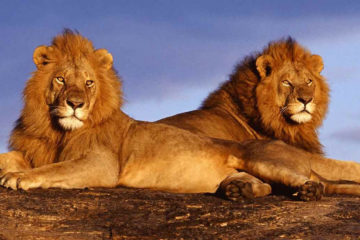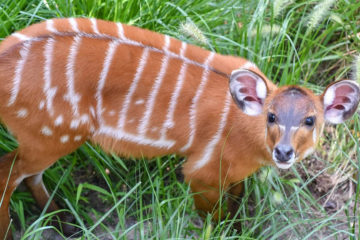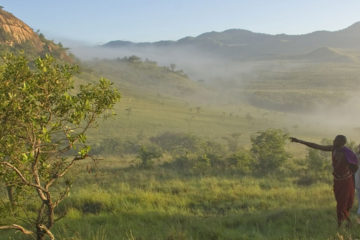Nairobi National Park lies within sight of Nairobi city, and animals can be seen against a backdrop of high-rise buildings. The park’s proximity to a large urban center is unique in Africa. A visit makes for an excellent break from the hustle and bustle of the city, and wildlife viewing is surprisingly good. Most big safari animals are present (except elephants). There is a small walk at the entrance leading through indigenous forest, and several wildlife enclosures with some unusual animals including bongo antelope.
Best Time to Visit
Visitors will be treated to dust-free skies and an abundance of baby animals and migratory birds during the wettest period of the year (March to May). However, the wildlife will be harder to track down and driving conditions will be testing, to say the least. Your best bets for animal spotting are the other months of the year, which are drier and sunnier.
Nairobi NP has a decent variety of wildlife. Aside from elephants, all of the Big Five are present. There is a good population of both black rhino and white rhino and the latter are quite easily seen grazing on the open plains. Leopards are very shy, but lion, cheetah and hyena are regularly spotted. Buffalo, Masai giraffe and a variety of antelope are common. In July and August, a mini migration of wildebeest, zebra and gazelle crosses into the park and its green pastures from the surrounding areas.
Most of Nairobi National Park consists of open grassland. The city’s high-rise buildings are visible and, from a wilderness point of view, are quite disturbing – although it does create opportunities for unusual pictures. The Athi river track in the south of the park offers views over the scenic waterway, ridge and cliffs. The safari walk at the entrance of the park meanders through a beautiful patch of indigenous forest.
Weather & Climate
The weather is predictable at Nairobi National Park as it adheres to longstanding climatic patterns. The Dry season (June to October) is marked by an absence of rain and loads of sunshine. The Wet season (November to May) has two periods of rain (November to December, and March to May), with an intervening period of drier weather. The park’s high altitude means cool air is the norm at night.




